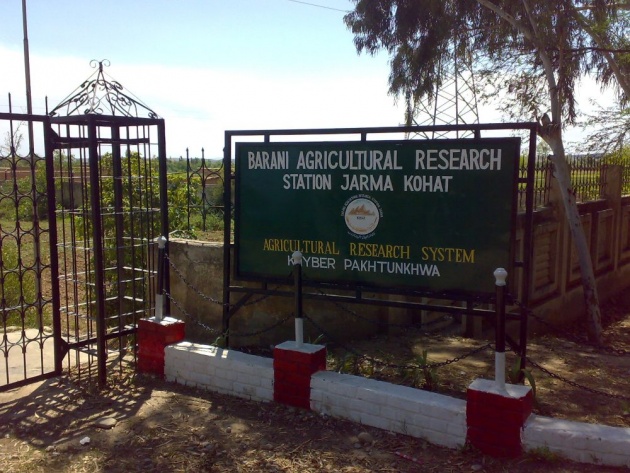Objectives:
v Development of high yielding, drought, disease and pest resistant varieties of field and Horticultural crops.
v Technology development to restore the soil fertility, moisture conservation of productive farming.
v Production of quality seed for commercially grown crops in the area.
v Establishment of experimental/progeny orchard though introduction and acclimatization of fruit varieties and standardization of production technology of traditional and non-traditional horticultural crops.
v Multiplication of true-to-type plant and expansion in fruit growing area.
v Confirmation and transfer of technology through adaptive research trails on wheat, maize, bajra, sorghum, peanut, sunflower, fruits, and fodder.
2.4: Activities & Achievements:
Barani agricultural research project has two sub-components,
a) Adaptive Research
b) Station research at ARS Kohat and ARS Ahmadwala, Karak.
Adaptive Research:
Under the adaptive research program, trails of different cereals, fodder, oilseeds, pulses and horticultural crops are laid out in the division. These adaptive research trails are planted to verify/refine under a wide range of agro climatic conditions and to transfer the improved varieties and technology to the farmers.
5: Major Achievements in R&D
Following are some major achievements in the field of research of crops.
Cereals:
Three commercial verities of wheat i.e. fakhre sarhad, tatara-96 and suleman-96 were recommended from hundreds of verities/lines tested. These verities are widely adapted in the farming community of the area. A new verity of KT-2000 is approved with the potential of 32mds/acre. The new verity is also superior in growth parameters.
In millet, a variety Kohat-97 was approved for rain fed areas of the province. Simultaneously another variety composite-II is in the final stages of release. Sorghum variety PARC-II for grain purpose is also in the final stages of approval.
Fodders:
Fodders are the most needed crops of the farming system of the Kohat. Non-traditional fodders i.e. luceme, motgrss sadabahar, oats and multi-cut bajra have been introduced in the dry areas of Kohat. Their performance is satisfactory and farmers have adapted the crops.
Oilseed:
Hybrid/improved varieties of sunflower, rape seed, groundnut & sesamum are being tested for the adaptation. Based on the results of experiments on these crops, sunflower variety, SF-187, SF-177, and PR-93 are recommended for the area. Rapeseed variety Pak-China-89 and groundnut varieties Chakoori, BARD-479 and SP-2000 have been recommended for Kohat area.
Pulses:
Varieties of lentil, mung, mash and gram are being tested at ARS for adaptation in the region. Improved varieties of these crops have been planted on the farmers fields as adaptive trails to demonstrate productive farming in dry areas of Kohat divisions.



